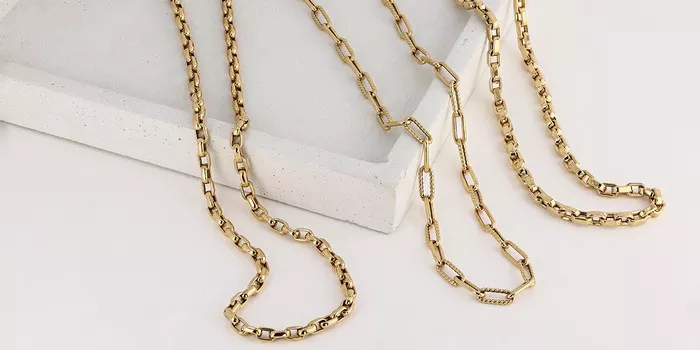When it comes to choosing a necklace chain, durability and strength are crucial factors to consider. The strength of a necklace chain determines its ability to withstand daily wear, hold pendants securely, and resist breakage over time. With various materials and designs available, understanding the strongest types of necklace chains can help you make an informed decision based on your style preferences and durability needs.
Understanding Necklace Chain Strength
Necklace chains are crafted from different materials, each offering unique strengths and characteristics:
1. Gold Chains:
Gold is a popular choice for necklace chains due to its elegance and versatility. However, pure gold (24 karat) is relatively soft and not ideal for everyday wear. To increase durability, gold chains are often alloyed with stronger metals like copper or silver, resulting in 18k or 14k gold chains that are more resilient while retaining the beauty of gold.
2. Silver Chains:
Sterling silver chains are another classic option known for their affordability and lustrous appearance. Sterling silver consists of 92.5% pure silver alloyed with copper for added strength. While sterling silver chains are durable, they can tarnish over time and require occasional polishing.
3. Platinum Chains:
Platinum is one of the strongest precious metals used in jewelry, known for its density and resistance to wear. Platinum chains are hypoallergenic and maintain their luster exceptionally well, making them ideal for daily wear. However, platinum chains tend to be more expensive than gold or silver.
4. Titanium Chains:
Titanium is a lightweight yet incredibly strong metal, making it an excellent choice for durable necklace chains. Titanium chains are highly resistant to corrosion, tarnish, and scratches, making them suitable for those with active lifestyles or sensitive skin.
5. Stainless Steel Chains:
Stainless steel is prized for its strength, durability, and affordability. It is resistant to tarnish, corrosion, and scratches, making stainless steel chains ideal for daily wear and maintenance-free care.
See Also: Which Finger to Wear Pearl Ring
6. Diamond-Cut Rope Chains:
Rope chains are popular for their intricate design and strength. Diamond-cut rope chains feature small cuts on the surface that enhance their sparkle and reduce the risk of snagging or breakage.
Factors Influencing Necklace Chain Strength
Several factors contribute to the overall strength and durability of a necklace chain:
1. Chain Design: Different chain designs, such as curb, box, cable, or snake chains, offer varying degrees of strength and flexibility. For example, box chains are sturdy and less prone to kinking, while snake chains are more delicate and require careful handling.
2. Chain Thickness: The thickness or gauge of a chain impacts its strength. Thicker chains are generally stronger and less likely to break under stress compared to thinner chains.
3. Clasp Quality: A strong clasp is essential for securing the chain and preventing accidental loss. Lobster clasps and spring ring clasps are commonly used for their reliability and ease of use.
4. Material Quality: High-quality materials and craftsmanship contribute to the overall durability of a necklace chain. Look for chains made from reputable manufacturers known for their attention to detail and use of superior materials.
Choosing the Right Necklace Chain
When selecting a necklace chain based on strength, consider your lifestyle, aesthetic preferences, and budget:
Daily Wear: If you plan to wear the necklace daily or during physical activities, opt for a chain that can withstand wear and tear without compromising its appearance.
Pendant Compatibility: Ensure the chain is strong enough to support the weight of any pendants or charms you wish to wear without stretching or breaking.
Skin Sensitivity: Choose hypoallergenic materials like titanium or platinum if you have sensitive skin or allergies to certain metals.
Maintenance Tips
To prolong the life of your necklace chain:
1. Regular Cleaning: Clean your chain regularly to remove dirt, oils, and debris that can cause tarnishing or corrosion.
2. Proper Storage: Store your necklace chain in a jewelry box or pouch to prevent tangling and minimize exposure to moisture or sunlight.
3. Professional Inspection: Periodically have your necklace chain inspected by a jeweler to check for wear, damage, or loose links.
Conclusion
Selecting the strongest necklace chain type involves considering various factors such as material strength, design, and maintenance requirements. Whether you prefer the classic elegance of gold or the modern durability of titanium, choosing a high-quality necklace chain ensures both style and longevity. By understanding these key considerations, you can confidently choose a necklace chain that suits your lifestyle and showcases your personal style for years to come.

